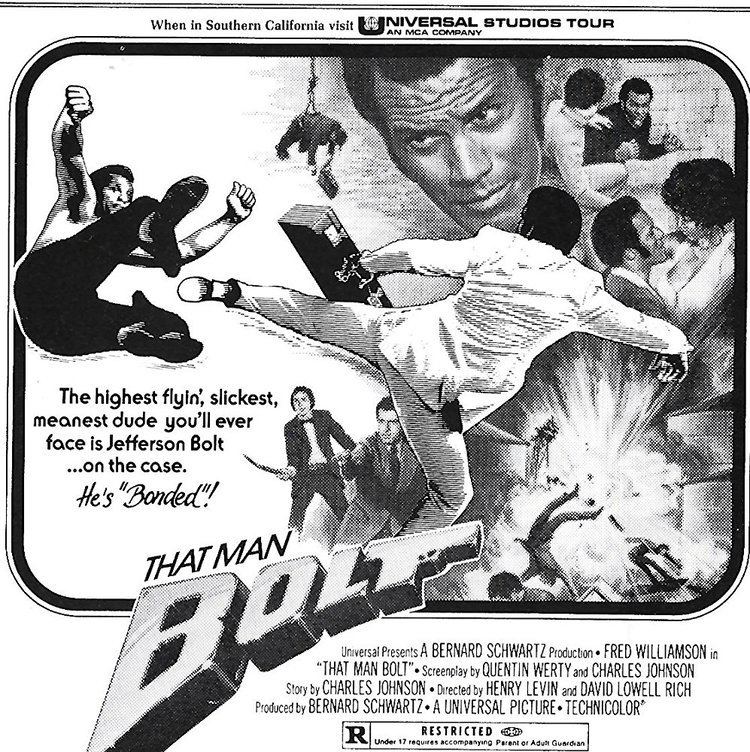13 Frightened Girls (1963) by #WilliamCastle#KathyDunn #MurrayHamilton #HughMarlowe #JudyPace
While attending a school for diplomats' daughters a teenager starts to engage in espionage.
"13 TERRIFIED TEENAGERS ON THE RUN!"#NotQuiteClassicCinema pic.twitter.com/Ya6w7gr0Du
— Angus Kohm (@AngusKohm) March 6, 2021
William Castle never fails to entertain me. I’ve enjoyed movies like House on Haunted Hill (1959) and The Tingler (1959) for many years. And his legendary gimmicks are always an added plus to the experience (not that I’ve ever actually EXPERIENCED the gimmicks, but reading about them – and imagining what they would have been like -always adds to my enjoyment of his movies).
In the case of 13 Frightened Girls (1963), the gimmick is a little less visceral than, say, a giant skeleton flying over the audience (Emergo from House on Haunted Hill) or electric buzzers wired to theatre seats (Percepto in The Tingler). This time the gimmick was a world wide talent search for teenage girls to play the daughters of diplomats who attend a special school. So, presumably, this would mean that people from 13 different countries could take pride in one of their own being selected to appear in this movie. I’m not sure if this actually increased ticket sales in the winning countries, but I understand the spirit of the idea.
On the downside, this gimmick seems more like a pre-movie publicity stunt than something that would actually enhance the experience of watching the film. Still, it’s a fun idea.
Judging by the title and the poster, a person might be tempted to think that 13 Frightened Girls is a horror film. It clearly seems to have been named after Castle’s successful 13 Ghosts (1960) and, going in, I almost wondered if I was about to see some sort of sequel to that movie… but no.
13 Frightened Girls is unusual and unique – hard to classify or put into a category. As I watched the first few minutes of it I found myself wondering what Castle had thought he was creating. Did he imagine that this was his version of… a James Bond film? It did come out one year after Dr. No (1962) – and there certainly were a lot of James Bond knockoffs in the 1960s (including some spoofy comedies), but it seems unlikely that this one could have been a direct decedent. Let’s face it, a story about teenage schoolgirls doesn’t quite seem like an obvious riff on Bond.
As the movie wore on, I decided that Castle must have been thinking of Alfred Hitchcock when he made this one. Picture it: a suspenseful story about an ordinary person, in this case a teenage schoolgirl, who gets mixed up in a dangerous game of espionage when she accidentally stumbles upon a murder. That could be a Hitchcock plot – and Hitchcock certainly knew how to use humour in his films…
…which brings me to the point that while 13 Frightened Girls is sort of a suspense thriller, it’s also a fairly silly teen comedy. In fact, I’d say it’s more of a comedy than a thriller. It also contains a potentially uncomfortable Lolita-like sub-plot: Candy, our 16-year-old schoolgirl heroine, is in love with 40 year old Wally Sanders, an intelligence agent who works at her father’s embassy. Wally is in love adult woman named Soldier, so it’s not actually a Lolita story. Still, Candy’s feelings for Wally make her decide to “help” him by using her school connections to spy on other counties and pass the information along to Wally. She does this under her nom de plume, Kitten.
As you can probably imagine, there is much silliness and humour in 13 Frightened Girls. There are also a few suspenseful sequences. It’s by no means William Castle’s best movie, but it’s quite a bit of fun. It’s also a fairly unique movie, as I can’t think of many (or any) others that are exactly like it. Some viewers might take exception to the cultural stereotypes that are on display. As a nearly 60 year old movie that deals with characters from 13 different countries, it’s almost inevitable that much of it would seem outdated now. For maximum enjoyment, it should be viewed as an artifact of it’s time.
Some reviewers have pointed out, quite correctly, that there are in fact 15 girls in this movie – not 13. I’m not sure how to explain that. Perhaps Castle was originally going to call it something else (The Candy Web perhaps), but then decided to cash in on his earlier hit movie, 13 Ghosts. Who knows? I suppose it should also be pointed out that most of the 13 (or 15) girls don’t ever appear to be particularly frightened, either.
No matter how you look at it, 13 Frightened Girls (1963) is #NotQuiteClassicCinema. I had no idea what to expect from it – and if I had, I might have thought twice about screening it on a #FridayNightAtTheHomeDriveIn. After all, it’s not a horror movie, or a monster movie, or any other kind of typical drive-in movie. It’s certainly not an exploitation film… or is it? Maybe what William Castle was exploiting this time, was the national pride of 13 (or 15) different countries. Maybe he was trying to start a whole new kind of exploitation. Or maybe he was just making a PG schoolgirl comedy. Someone suggested that it might pair well with an old Gidget movie (Gidget (1959) or Gidget Goes Hawaiian (1961) anyone?). And actually that might not be a bad way of understanding this film. Perhaps 13 Frightened Girls was William Castle’s Hitchcock meets Gidget movie. It may have failed to spark a whole new genre, but it’s a fascinating relic of another time.


